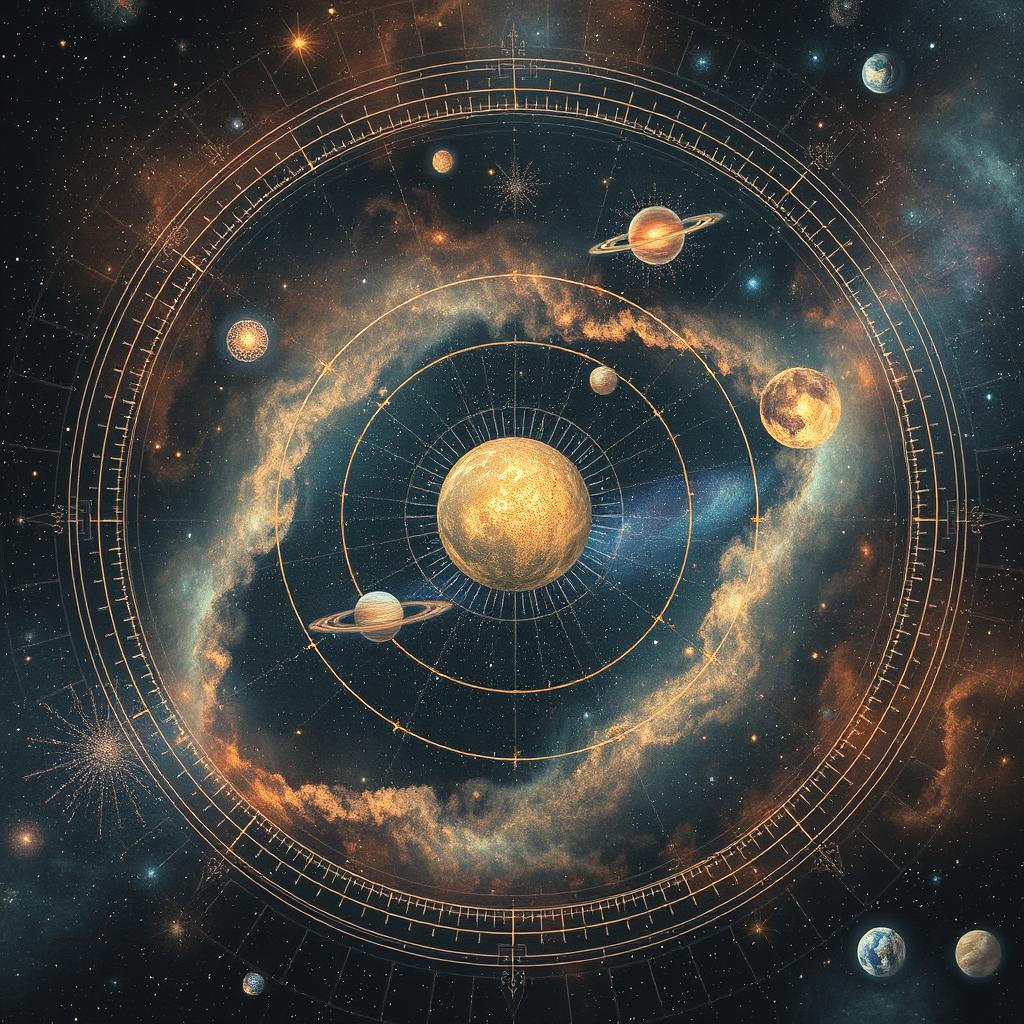Pythagoras and the music of the spheres: the universe as a perfect symphony

Imagine standing under a clear night sky, where the stars shine like scattered notes on a cosmic score. What if the universe were not just a collection of celestial bodies drifting through space, but an immense symphony in motion? This is the idea that Pythagoras and his followers left us: the concept of the music of the spheres, an invisible but fundamental universal harmony.
The universe is written in numbers and music
Pythagoras (6th century BCE) and his school saw numbers as the key to understanding reality. In their view, everything in existence follows precise mathematical principles, and music is one of the most tangible manifestations of this law. Pythagoras discovered that harmonic musical intervals correspond to simple numerical ratios: halving the length of a vibrating string produces a note an octave higher, while dividing it in proportions of 3:2 or 4:3 generates fifths and fourths.
If musical harmony follows mathematical rules, why not apply the same principle to the entire cosmos? Pythagoras hypothesized that the motion of the planets was also governed by numerical ratios, producing a perfect and constant music— a cosmic harmony that permeates all of creation, even if it remains imperceptible to our ears.
The hidden harmony of the cosmos
In ancient times, sound was considered more than just a vibration; it was the reflection of a higher order. The planets, moving in their orbits, were thought to generate sounds proportional to their speed and distance, creating a universal melody that, while inaudible to humans, influenced the soul and the destiny of mankind.
Plato expanded on this idea in The Republic, describing the world’s harmony as a principle that regulates justice and order. Later, in the 17th century, Kepler attempted to demonstrate the music of the spheres with his theory of elliptical planetary orbits, translating the proportions of planetary motion into numerical relationships.
Even today, science tells us that everything vibrates, from atoms to massive celestial bodies. In quantum physics, for example, string theory suggests that the fundamental nature of matter consists of microscopic vibrations. Perhaps Pythagoras was not so far from the truth after all.
What does it mean for us today?
The idea that the universe is governed by harmonic laws is not just a philosophical speculation; it is an invitation to seek harmony within ourselves and in our relationship with the world. If everything follows an invisible symphony, then our own lives can be experienced as a musical act:
-
Listening to the rhythm of our existence
Just as each planet has its own frequency, we too have an inner rhythm. Living in harmony means respecting it: alternating moments of activity and rest, following our natural timing without forcing it. -
Tuning in with our environment
A musician does not play alone but adapts to other instruments to create harmony. The same applies to life: when we manage to resonate with those around us, the flow of existence becomes more natural and fulfilling. -
Avoiding inner dissonance
Illness, stress, and discomfort often arise from a form of dissonance: when we make choices that do not align with our true nature, we create tension that sooner or later manifests itself. The solution? Restoring coherence between what we are, what we want, and what we do. -
Finding our note in the world’s orchestra
If the universe is a great symphony, each of us is a unique and irreplaceable note. It is not about being the strongest or the fastest, but about playing our note with authenticity. A violin does not need to sound like a double bass, and vice versa. True harmony arises when each element expresses its essence in the purest way possible.
An invitation to “hear” harmony
Pythagoras leaves us with a powerful message: reality is not chaos but music. We may not be able to hear the music of the spheres, but we can perceive it in the beating of our hearts, in the waves of the sea, in the rhythms of the seasons, in the perfect proportions of a flower. The universe is constantly speaking to us—it is up to us to sharpen our hearing and learn to listen.
So next time you look up at the sky, remember that you are witnessing a grand symphony in motion. And don’t forget: you are part of it, too.


